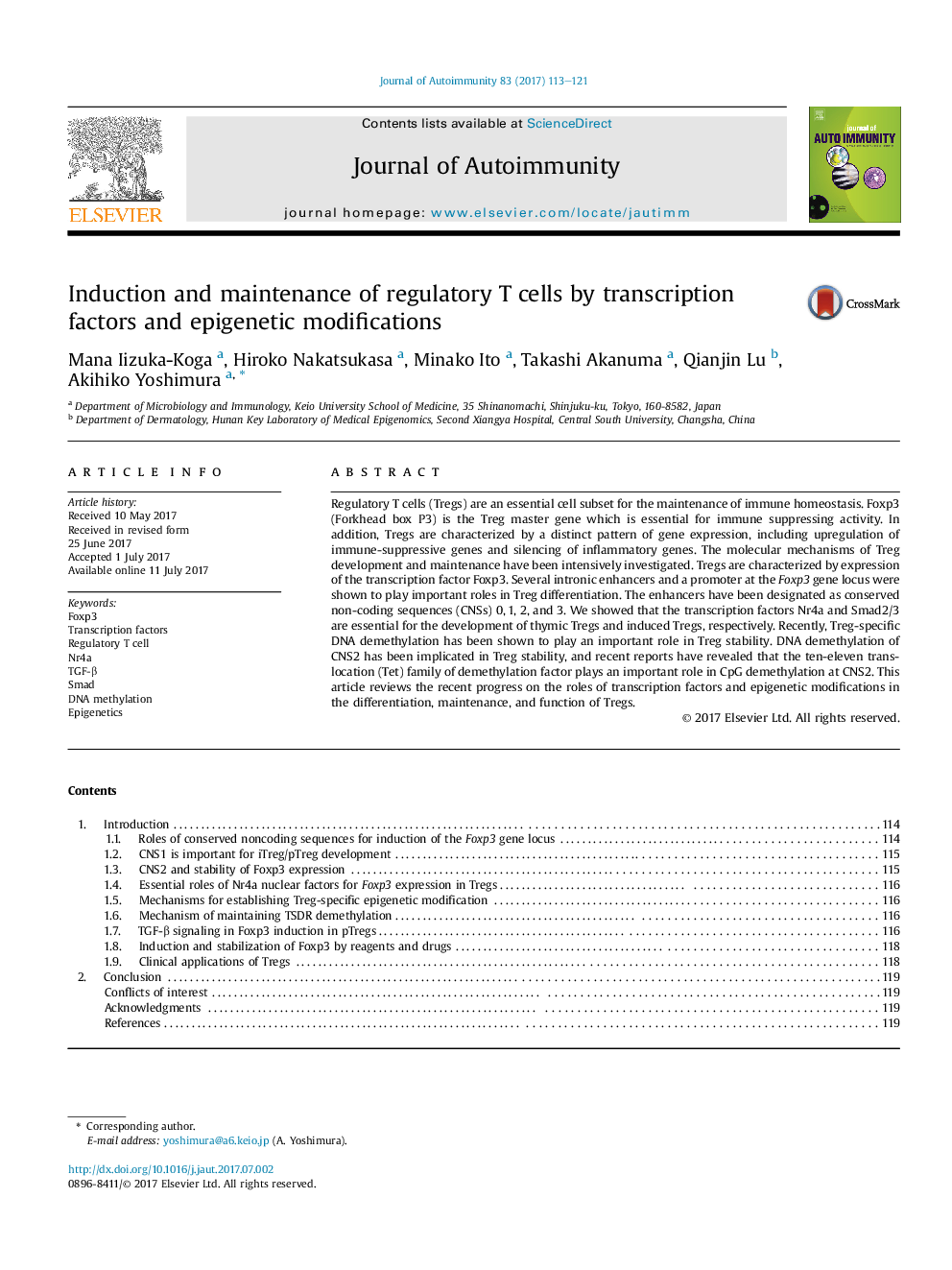| Article ID | Journal | Published Year | Pages | File Type |
|---|---|---|---|---|
| 5667847 | Journal of Autoimmunity | 2017 | 9 Pages |
â¢Tregs have been expected to be useful for immune therapy.â¢Transcriptional regulation of Foxp3 expression has been clarified.â¢NR4a family factors are required for thymic Treg development, and Smad2/3 are required fro induced Treg development.â¢Epigenetic modifications of Tregs are important for stability of Tregs.
Regulatory T cells (Tregs) are an essential cell subset for the maintenance of immune homeostasis. Foxp3 (Forkhead box P3) is the Treg master gene which is essential for immune suppressing activity. In addition, Tregs are characterized by a distinct pattern of gene expression, including upregulation of immune-suppressive genes and silencing of inflammatory genes. The molecular mechanisms of Treg development and maintenance have been intensively investigated. Tregs are characterized by expression of the transcription factor Foxp3. Several intronic enhancers and a promoter at the Foxp3 gene locus were shown to play important roles in Treg differentiation. The enhancers have been designated as conserved non-coding sequences (CNSs) 0, 1, 2, and 3. We showed that the transcription factors Nr4a and Smad2/3 are essential for the development of thymic Tregs and induced Tregs, respectively. Recently, Treg-specific DNA demethylation has been shown to play an important role in Treg stability. DNA demethylation of CNS2 has been implicated in Treg stability, and recent reports have revealed that the ten-eleven translocation (Tet) family of demethylation factor plays an important role in CpG demethylation at CNS2. This article reviews the recent progress on the roles of transcription factors and epigenetic modifications in the differentiation, maintenance, and function of Tregs.
